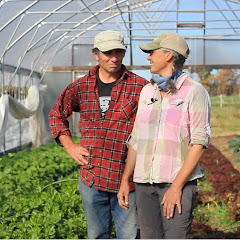The bees are doing well, being fed a syrup of water and sugar until they get their hive established. The strawberries are also in good shape (they like all the rain), with some already starting to flower. And on a personal level, it's been a good year for morels on the farm.

Bees on their temporary feeder

Strawberry patch

Morel
Last week we were able to get the first tomatoes planted, 67 cherry tomato plants. They are currently undr row cover and doing well. And while this week's soggy conditions (2.75 in rain Sunday/Monday) have once again brought planting to a halt, there is plenty of work to do. The last several days have been spent thinning the beets, spinach and arugula, as well as sanitizing the many crates and buckets we use to harvest and pack the vegetables.

Cherry tomato transplant

Cleaning crates

Ready for harvesting

Lettuce update (see 4/1 posting for last view)


























